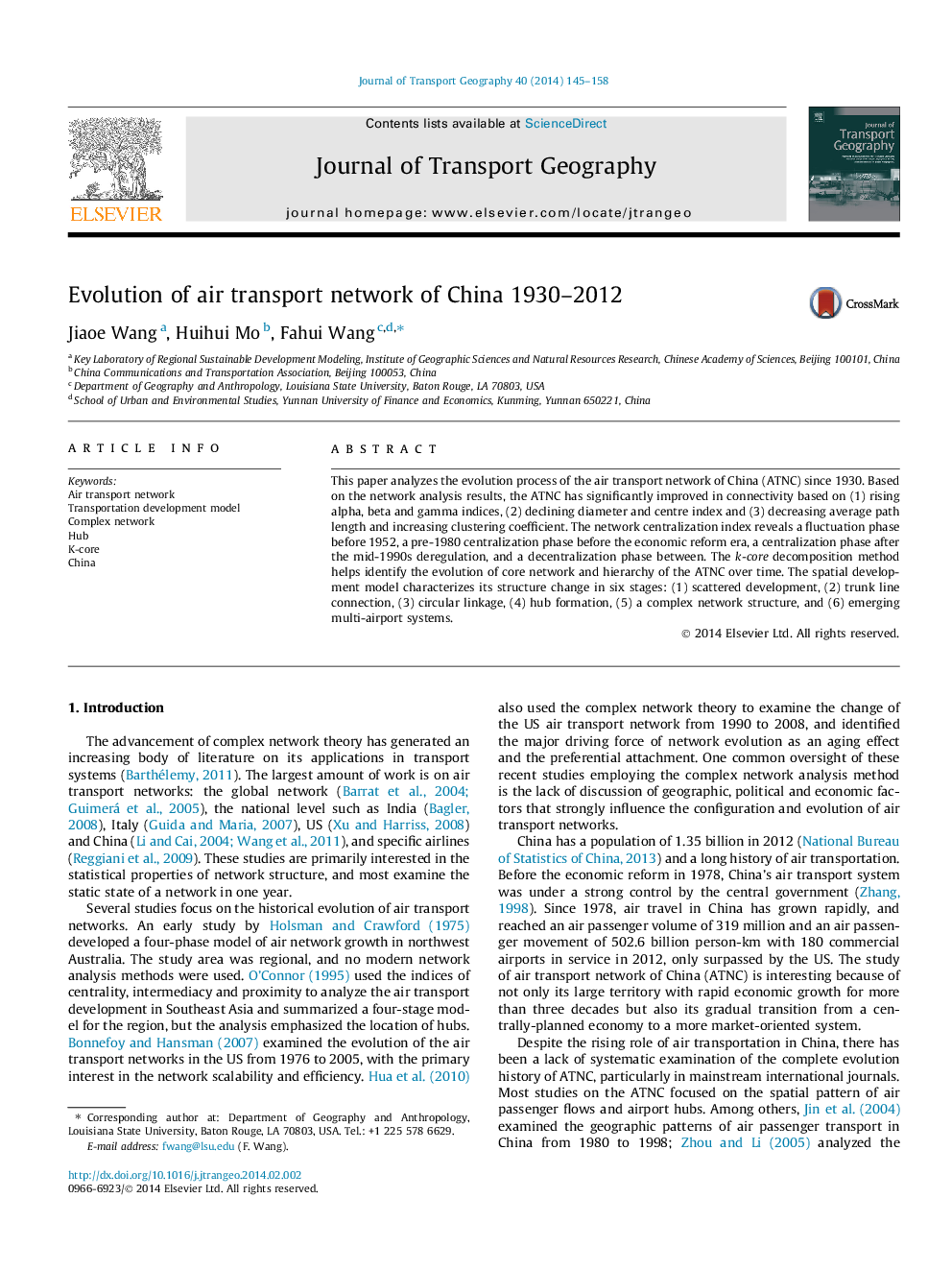| Article ID | Journal | Published Year | Pages | File Type |
|---|---|---|---|---|
| 1059061 | Journal of Transport Geography | 2014 | 14 Pages |
•Air Transport Network of China (ATNC) has significantly improved in connectivity.•Both average path length and clustering coefficient have decreased.•The network centralization index is used to examine (de)centralization.•The k-core decomposition method reveals the evolution of core network.•The ATNC have evolved from scattered development to a complex network.
This paper analyzes the evolution process of the air transport network of China (ATNC) since 1930. Based on the network analysis results, the ATNC has significantly improved in connectivity based on (1) rising alpha, beta and gamma indices, (2) declining diameter and centre index and (3) decreasing average path length and increasing clustering coefficient. The network centralization index reveals a fluctuation phase before 1952, a pre-1980 centralization phase before the economic reform era, a centralization phase after the mid-1990s deregulation, and a decentralization phase between. The k-core decomposition method helps identify the evolution of core network and hierarchy of the ATNC over time. The spatial development model characterizes its structure change in six stages: (1) scattered development, (2) trunk line connection, (3) circular linkage, (4) hub formation, (5) a complex network structure, and (6) emerging multi-airport systems.
